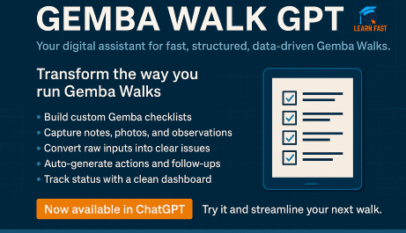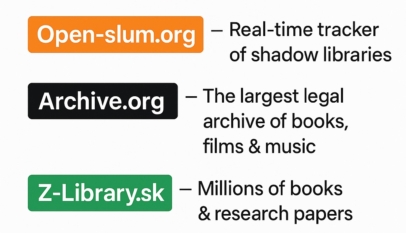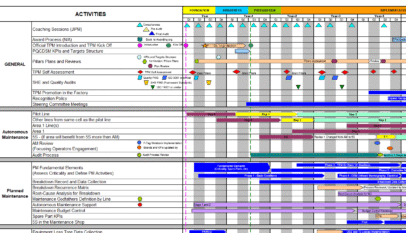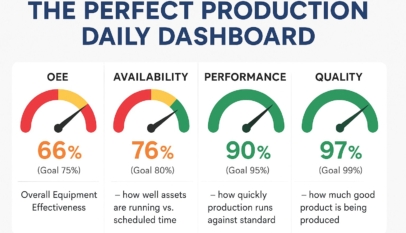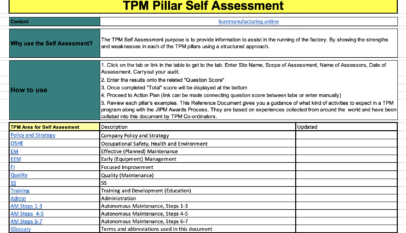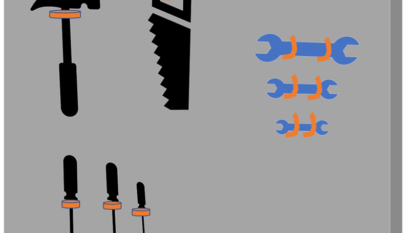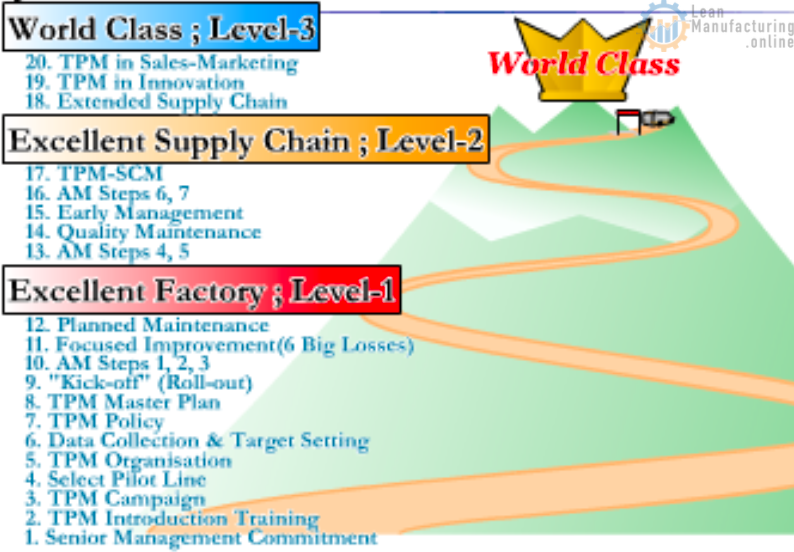Objective
- To explain the methodology and implementation of the tool, thus demonstrating its usefulness and benefits.
- To provide an update on its usage and our “take-out” of findings.
- Provide a “hands-on” exercise to apply the tool to a “real-life” situation.
The TPM Self Assessment’s purpose is to provide information to assist in running the factory.
By showing the strengths and weaknesses of each TPM pillar using a structured approach.
TPM Self Assessment can be downloaded here
Principles of the Self Assessment
- “Self” Assessment is the aim.
- A Tool for all Levels within the Business.
- A simple and effective scoring system.
- 1 to 1.5 Hour duration per Pillar.
- A logical flow of questioning and point-scoring.
Methodology
- Define the scope of area for assessment, i.e., Pilot area, Packing Line, Area of Plant or Total Site
- Involvement of “Cross-Sectional” Team – all levels
- Involvement of Workforce
- operators
- technicians
- Facilitation provided by “external” or “internal” assessors
- Making Production Team Members assess Warehouse, or
- Warehouse Team Member considering Packaging Area
- Tangible evidence and results available to support findings/gaps
Analysis
- Establish total score and areas for Pillar
- Conduct S.W.O.T. analysis
- Display of Strengths and Weaknesses
- Identification of “Top 3” points from findings of each Pillar
- Action plan developed for above items by Assessment Team
In the Self Assessment, just like for an important project, the S.W.O.T. makes it possible to analyze the activity of each pillar according to two distinct environments:
Internal environment: Strengths and Weaknesses of the workgroup, the project team or the company.
- Strengths. Internal strengths may relate to personnel’s skills and technical expertise, the material and financial resources available to the company, flexibility or even the internal capacity to innovate or improve existing products.
- Weaknesses. Conversely, strengths and weaknesses can be linked to gaps in skills, communication, and a lack of means… More generally, to recurring problems and losses whose history shows an inability or great difficulty to master.
External environment: Opportunities and Threats related to the company’s activity or the project to be developed.
- Opportunities. The opportunities are either related to internal strengths that can be enhanced by exporting them or external forces that can be exploited for internal development: external companies, sister factories, or exchanges with other business sectors.
- Threats from the market, competition, easily reproducible products, distributor brands and hard discounts. The transfer of production sites to countries with more attractive labour and business taxes…
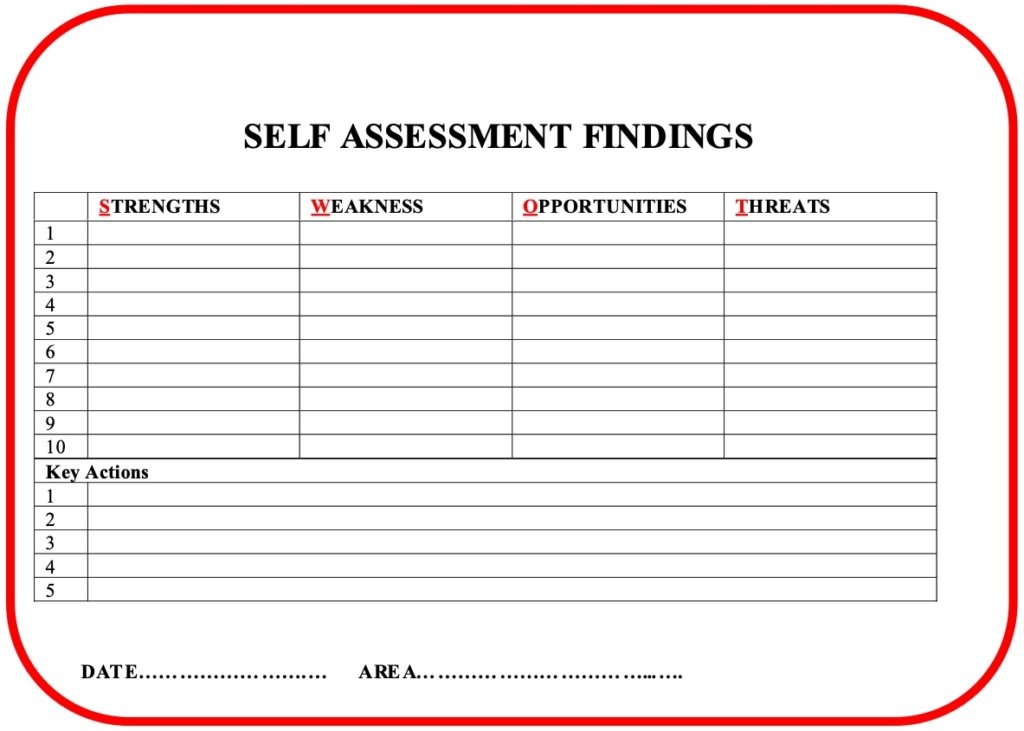
How to use the assessment
- Click on the tab or link in the table to get to the tab. Enter the Site Name, Scope of Assessment, Name of Assessors, and Assessment Date. Carry out your audit
- Enter the results into the related “Question Score.”
- Once completed “Total” score will be displayed at the bottom
- Proceed to Action Plan (link can be made connecting question score between tabs or enter manually)
- Review each pillar’s examples. This Reference Document guides you on what kind of activities to expect in a TPM program and the JIPM Awards Process. They are based on experiences collected from around the world and have been collated into this document by TPM Co-ordinators
- Select “Paste Values” into the current month’s cells
Self Assessment Categories
- Company Policy and Strategy
- Occupational Safety, Health and Environment
- Effective (Planned) Maintenance
- Early (Equipment) Management
- Focused Improvement
- Quality (Maintenance)
- 5S
- Training and Development (Education)
- Administration
- Autonomous Maintenance, Steps 1-3
- Autonomous Maintenance, Steps 4-5
- Autonomous Maintenance, Steps 6-7
- Glossary
Future Actions
- Place all materials onto a database
- Develop a software package to analyze and present the data easily
- Include the improved criteria for award assessment
- Ensure usage by sites that want to apply TPM successfully
- Utilize Self Assessment as a way to show TPM progress
- Champion the PROCESS
TPM Self Assessment can be downloaded here
Updated on May 7, 2023

